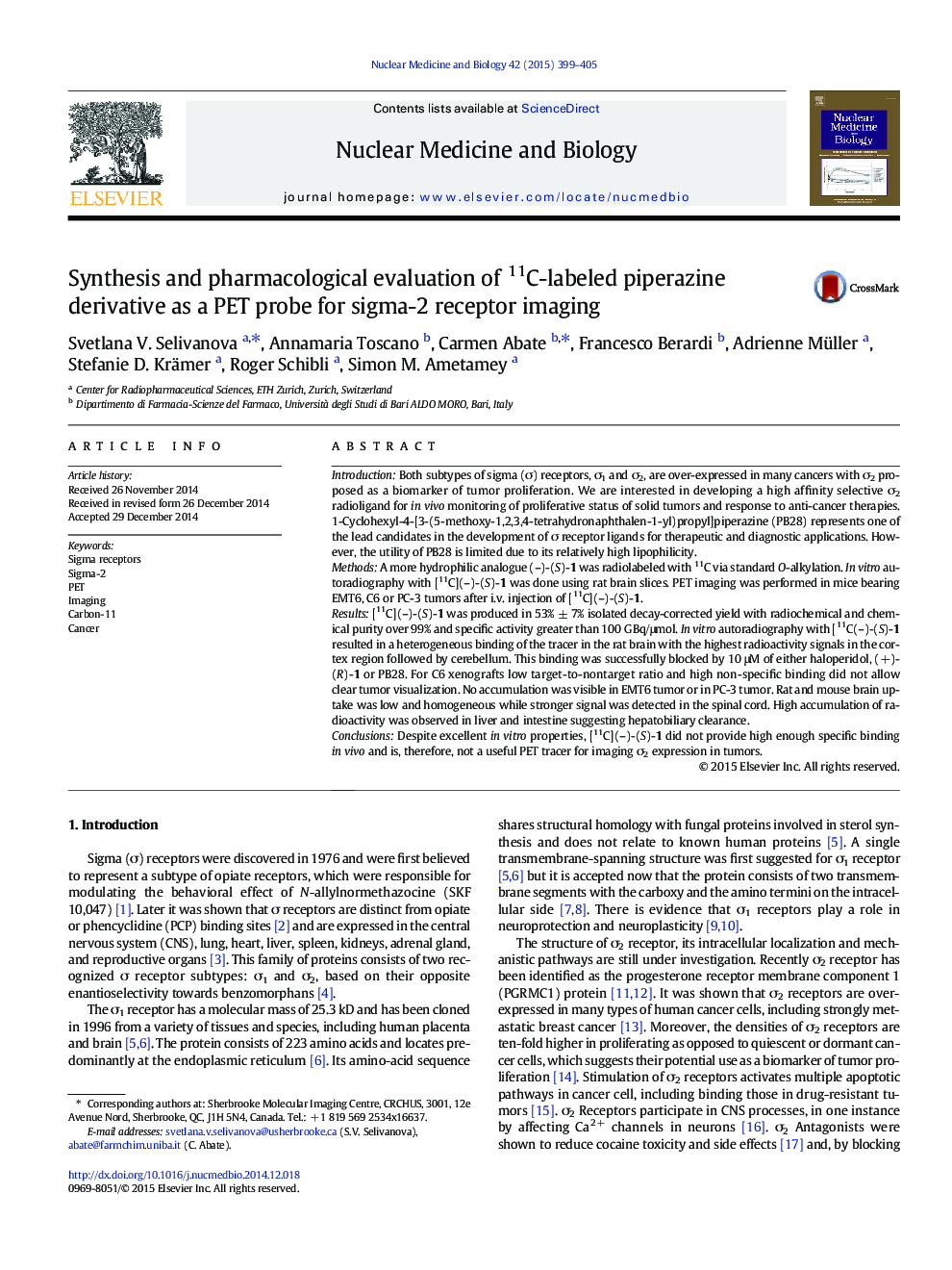| Article ID | Journal | Published Year | Pages | File Type |
|---|---|---|---|---|
| 2153466 | Nuclear Medicine and Biology | 2015 | 7 Pages |
IntroductionBoth subtypes of sigma (σ) receptors, σ1 and σ2, are over-expressed in many cancers with σ2 proposed as a biomarker of tumor proliferation. We are interested in developing a high affinity selective σ2 radioligand for in vivo monitoring of proliferative status of solid tumors and response to anti-cancer therapies. 1-Cyclohexyl-4-[3-(5-methoxy-1,2,3,4-tetrahydronaphthalen-1-yl)propyl]piperazine (PB28) represents one of the lead candidates in the development of σ receptor ligands for therapeutic and diagnostic applications. However, the utility of PB28 is limited due to its relatively high lipophilicity.MethodsA more hydrophilic analogue (–)-(S)-1 was radiolabeled with 11C via standard O-alkylation. In vitro autoradiography with [11C](–)-(S)-1 was done using rat brain slices. PET imaging was performed in mice bearing EMT6, C6 or PC-3 tumors after i.v. injection of [11C](–)-(S)-1.Results[11C](–)-(S)-1 was produced in 53% ± 7% isolated decay-corrected yield with radiochemical and chemical purity over 99% and specific activity greater than 100 GBq/μmol. In vitro autoradiography with [11C(–)-(S)-1 resulted in a heterogeneous binding of the tracer in the rat brain with the highest radioactivity signals in the cortex region followed by cerebellum. This binding was successfully blocked by 10 μM of either haloperidol, (+)-(R)-1 or PB28. For C6 xenografts low target-to-nontarget ratio and high non-specific binding did not allow clear tumor visualization. No accumulation was visible in EMT6 tumor or in PC-3 tumor. Rat and mouse brain uptake was low and homogeneous while stronger signal was detected in the spinal cord. High accumulation of radioactivity was observed in liver and intestine suggesting hepatobiliary clearance.ConclusionsDespite excellent in vitro properties, [11C](–)-(S)-1 did not provide high enough specific binding in vivo and is, therefore, not a useful PET tracer for imaging σ2 expression in tumors.
